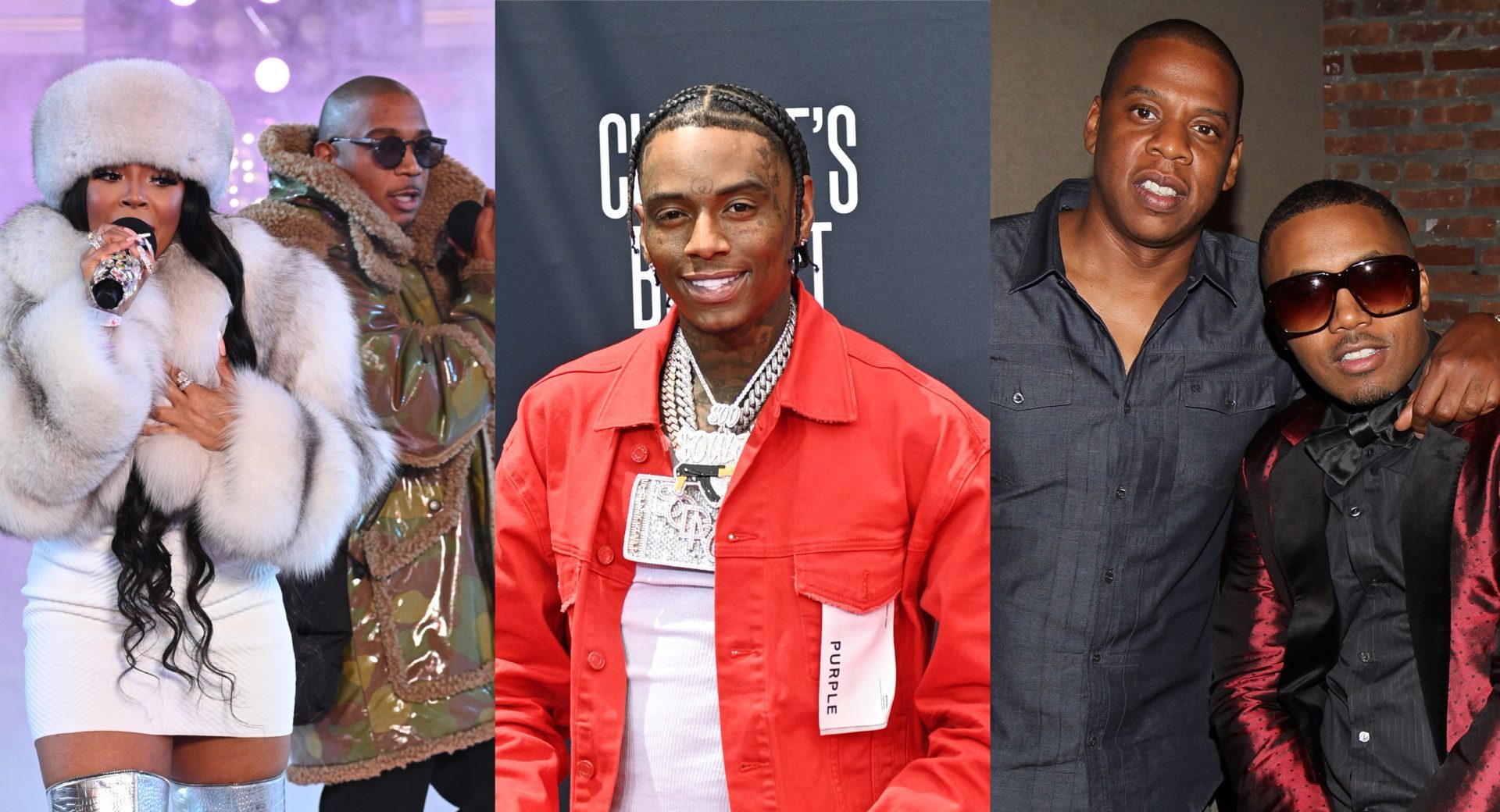Celebrities You Will Never See The Same Way After Reading These Facts About Them
Our Rating : realFact
★★★
https://ift.tt/3O7MpQS



In honor of Hip Hop’s 50th Anniversary, The Shade Room would like to commemorate the moments, the pioneers, and the tools of the art form that have ultimately transcended the music genre, influencing every aspect of modern-day popular culture. Join us each week as we look back at five decades of hip hop.
RELATED: 50 Years Of Fiyah: A Look Back At Hip Hop In The 90s
To The Flo! Hip Hop Music Adopts Dance Craze Formula
By the early 2000s, hip hop was approaching 30 years of growth–in sound, business, and mainstream popularity. So, in addition to the experimental sounds that rounded out the decade came a trend we see today with music consumption on social media: trendy dances. Artists began pairing their hit songs with few-count moves.
In 2001, G. Dep and Diddy re-introduced hip hop fans to the popular 80s Harlem Shake in the video for “Special Delivery.” The dance also inspired DJ Webstar and Young B’s “Chicken Noodle Soup” (2006.) Between 2012 and 2013, internet users adopted a watered-down version of the complex shoulder movement in the viral ‘Harlem Shake’ group challenge.
Chingy’s “Right Thur” (2003), the Ying Yang Twins’ “Salt Shaker” (2003), Fat Joe and Remy Ma’s “Lean Back” (2004), Lil Jon’s “Snap Yo Fingers” (2006) and Huey’s “Pop, Lock & Drop It” (2006) are some notable examples that ushered specific dance moves into hip hop culture.
DJ Unk‘s “Walk It Out” (2007), GS Boyz’s “Stanky Legg,” and New Boyz‘s “You’re A Jerk” (2009) still hold strong playback value at kickbacks, cookouts, and club scenes. Additionally, this era’s impact on dance moves is still seen in modern choreography.
Advanced Tech Skyrockets Hip Hop & Soulja Boy Becomes ‘Founding Father of Internet Fame’
Soulja Boy adopted a similar ‘dance craze’ formula with his debut single in 2007. If you let him tell it, he was the FIRST to achieve viral fame with “Crank That (Soulja Boy).” The catchy track came amid that transition from physical to digital music consumption. It reached number one on Billboard’s Hot 100 and stayed there for seven weeks.
Soulja Boy was about a decade ahead of what would become a norm for artists in today’s streaming and TikTok era. His career is one of the earliest examples of artists leveraging social media and the internet to promote their music via “challenges.”
After “Crank That” hit, so did videos of fans cranking it, including renditions of the Batman, Superman, and Spongebob. Dozens of fan uploads landed on emerging user-friendly sites like YouTube and MySpace.
RELATED: Soulja Boy Jokingly Says There Would Be No TikTok If It Weren’t For Him
As mentioned, hip hop music was swept up by the changing dynamics of the 2000s. Physical mixtapes and CD albums started to find homes on online music services like iTunes (for purchase) and Limewire (for illegal downloads). YouTube, which started in 2005, was also a key player in the changing consumption space.
Such online services diminished the days of fans only relying on radio stations, party DJs, or music shows like Yo! MTV Raps and BET’s106&Park and Rap City to hear their favorite tunes or see its music videos.
Starting this month, YouTube is running its FIFTY DEEP campaign, highlighting “two thousand Hip Hop videos that have changed the game.” The platform’s Director of Black Music & Culture, Tuma Basa, recently spoke about why YouTube is “going hard to salute” the genre.
“Because Hip Hop has been poppin’ on YouTube dating back to when Soulja Boy’s “Crank That” video went viral in 2007. Since then, we’ve had trailblazers like Cardi B, Latto, Megan Thee Stallion, Nicki Minaj, SZA, and many more ruling our charts. Just last year, nine of the top ten artists in the U.S. were Hip Hop artists and collectively earned over 16 billion views globally,” Basa said.
Portable CD players also slowly began making a graceful exit. And MP3 players, like the first iPod in October 2001, ushered in a new way to consume hip hop on the go. Not only that, for plenty of hip hop artists, the iPod became a 2000s fashion accessory.
Experimental Sounds Find A Lane In Hip Hop
At the turn of the century, gangsta rap and conscious rap were arguably the most prominent sub-genres of hip hop. But the 2000s ushered in waves of experimental sounds, from snap rap to cross-genre duets, punchline rap, and mixtapes using existing beats.
Snap rap (also known as ringtone rap) brought a sense of fun and playfulness into rap that often led to commercialization and mainstream fame. It emerged in West Atlanta with influence from the 90s sub-genre crunk.
Though short-lived at the time, the subgenre was a key influencer of the dance craze and was propelled by artists like D4L, Dem Franchize Boys, and K-Rab. Its influence is still seen in modern hip-hop artists like the Migos.
But the arguable lack of complex lyrics and bars being replaced by catchy verses and hooks didn’t sit well with everyone.
Nowadays, it seems like there’s a never-ending debate about “real” hip-hop music and how it’s supposed to sound and be created. But those critiques also have roots in the early 2000s when MCs were rapping about how to rap. Take Slaughterhouse members–Joe Budden, Crooked I, Joell Ortiz, Royce da 5’9. Or Cassidy and Nas. All of which spoke on rappers’ pen games and lyrics during the 2000s.
The post 50 Years Of Fiyah: A Look Back At Hip Hop In The 2000s appeared first on The Shade Room.
" Good morning love! Let the sunshine be so bright and remove all the worries from your life. Have a delightful day. "
0 comments:
Post a Comment
Please ,
Don't enter span link